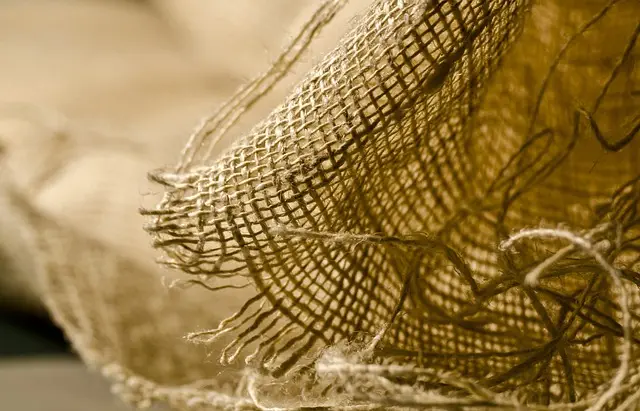Muscle soreness post-exercise, known as Delayed Onset Muscle Soreness (DOMS), is caused by microscopic tears in muscle fibers that trigger an inflammatory response as the body repairs itself. Kratom, a natural remedy from Southeast Asia with traditional pain-relieving properties, has been explored for managing this soreness due to its active compounds, mitragynine and 7-hydroxymitragynine, which may interact with opioid receptors to provide analgesic effects. When considering kratom for muscle recovery, it's imperative to use it responsibly, adhering to safe dosing and understanding its biphasic nature—it can act as both a stimulant and a sedative depending on the amount and strain used. Before purchasing kratom, individuals should verify its legal status in their region and buy from reputable vendors that perform lab testing for quality and safety. It's recommended to start with a low dosage to assess individual tolerance and to combine kratom use with proper rest, hydration, and nutrition for optimal muscle healing. Given the varying responses to kratom and the potential for interactions with other medications, it's crucial to consult with a healthcare professional before incorporating it into your health regimen, especially if you have pre-existing health concerns. Always remember to approach the use of kratom thoughtfully and in accordance with expert advice.
Muscle soreness can be a persistent challenge for both athletes and casual exercisers alike, often dampening the benefits of physical activity. As many seek natural remedies to alleviate discomfort without relying solely on conventional pain medication, kratom has emerged as a potential alternative. This article delves into the role of kratom in providing relief from muscle soreness, exploring its active compounds, effective strains, and safe integration into pain management routines. By understanding the science behind muscle soreness and kratom’s interaction with the body, readers can make informed decisions when considering kratom as a remedy to buy for their post-exercise recovery. We will also navigate the landscape of kratom strains, offering insights into which types are most effective and providing essential dosage guidelines to maximize relief while minimizing risks. Additionally, we’ll address the importance of purchasing high-quality, pure kratom products, as well as legal considerations when incorporating this natural supplement into your wellness regimen. Join us as we explore how kratom might be a valuable addition to your pain management toolkit.
Understanding Muscle Soreness and Kratom's Role

Muscle soreness can arise from various activities, including intense exercise, overuse injuries, or even from everyday tasks that strain your muscles beyond their accustomed use. This discomfort is often a result of microscopic tears in muscle fibers, known as Delayed Onset Muscle Soreness (DOMS), which typically occur 24 to 72 hours after the activity. The body’s natural healing process aims to repair these tears, but the healing phase can be uncomfortable. Kratom, a tropical evergreen tree native to Southeast Asia, has been traditionally used in its regions for pain relief and as a stimulant. Its leaves contain compounds known as alkaloids, particularly mitragynine and 7-hydroxymitragynine, which are believed to interact with the body’s opioid receptors, potentially offering analgesic properties. For those seeking natural remedies to manage muscle soreness, buying kratom might be an option to consider. It’s important to approach its use responsibly and with proper guidance, as kratom can have both stimulating and sedative effects depending on the dose and strain. Users should also be aware of the legal status of kratom in their jurisdiction before incorporating it into their muscle soreness management regimen.

When exploring natural remedies for muscle soreness, kratom has emerged as a potential option for those seeking relief. Kratom, derived from the leaves of the Mitragyna speciosa tree, is known for its various effects on the body, which can include analgesic properties. For individuals experiencing muscle soreness, whether from intense exercise, physical labor, or other activities, kratom strains such as Bali or Maeng Da are often recommended due to their reported pain-relieving qualities. It’s important for potential users to understand that while kratom may provide relief, it should be used responsibly and in accordance with local laws and regulations. When considering the purchase of kratom products, it is advisable to buy kratom from reputable vendors who provide quality assurance and lab testing to ensure safety and efficacy. Users should start with a lower dose to assess their tolerance and gradually increase as needed, always adhering to recommended dosages to avoid adverse effects. Integrating kratom into a wellness routine for muscle soreness relief can be a beneficial approach when combined with proper rest, hydration, and nutrition. As with any supplement or medication, individual responses to kratom can vary, and it is always recommended to consult with a healthcare professional before incorporating it into your regimen, especially if you have pre-existing health conditions or are taking other medications. Buying kratom should be done with the understanding that it may not be suitable for everyone, and its legality and accessibility can differ based on geographical location.
– The Science of Muscle Soreness Post-Exercise

muscle soreness, often referred to as delayed-onset muscle soreness (DOMS), is a common experience among individuals who engage in unfamiliar or intense physical activity. The science behind this phenomenon involves microtrauma to the muscle fibers, which trigger an inflammatory response. This response is the body’s natural healing process and typically peaks within 24 to 72 hours post-exercise. The mechanism underlying muscle soreness includes the disruption of muscle fiber proteins, leading to an influx of calcium into the muscles, causing a cascade of events that result in muscle tissue breakdown and inflammation.
Kratom, a plant from Southeast Asia with the botanical name Mitragyna speciosa, has been traditionally used for its potential pain-relieving properties. When discussing the role of kratom for muscle soreness relief, it’s important to consider its active alkaloids, such as mitragynine and 7-hydroxymitragynine, which are believed to interact with opioid receptors in the brain, potentially offering analgesic effects. These effects may help alleviate the discomfort associated with muscle soreness. While kratom is available for purchase through various channels, it’s crucial to use it responsibly and adhere to appropriate dosing guidelines, as its efficacy and safety for this purpose are subjects of ongoing research. Users interested in incorporating kratom into their post-exercise recovery regimen should consult with healthcare professionals to ensure it is appropriate for their individual health needs and fitness goals.
In conclusion, muscle soreness can be a significant hindrance to an active and healthy lifestyle. Understanding the mechanisms behind this discomfort is the first step toward effective relief. Kratom, a naturally occurring substance that has been explored for its potential benefits, may offer relief for those experiencing post-exercise muscle soreness. Its effects are believed to interact with the opioid receptors in the brain, which could contribute to pain management. For individuals looking to buy kratom, it is crucial to approach its use responsibly and within legal frameworks. As research continues to evolve, it is clear that kratom may hold promise for those seeking natural ways to alleviate muscle soreness following physical activity. However, consultation with healthcare professionals is always recommended before integrating any new substance into one’s wellness regimen.






